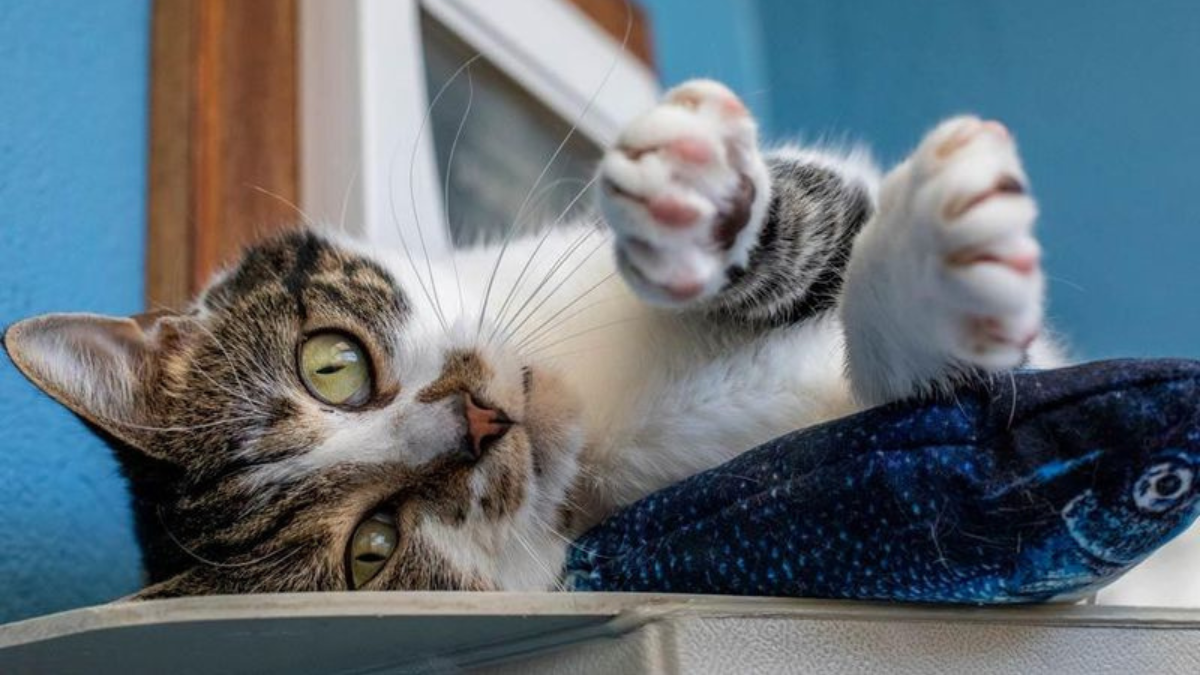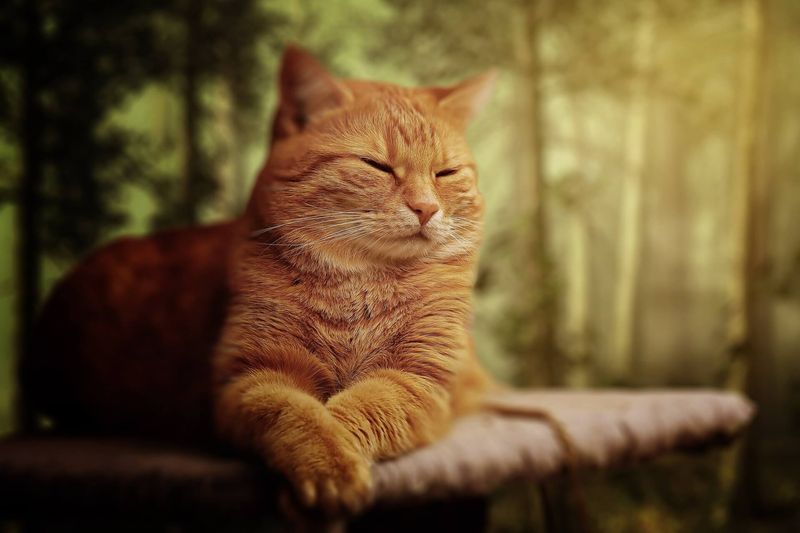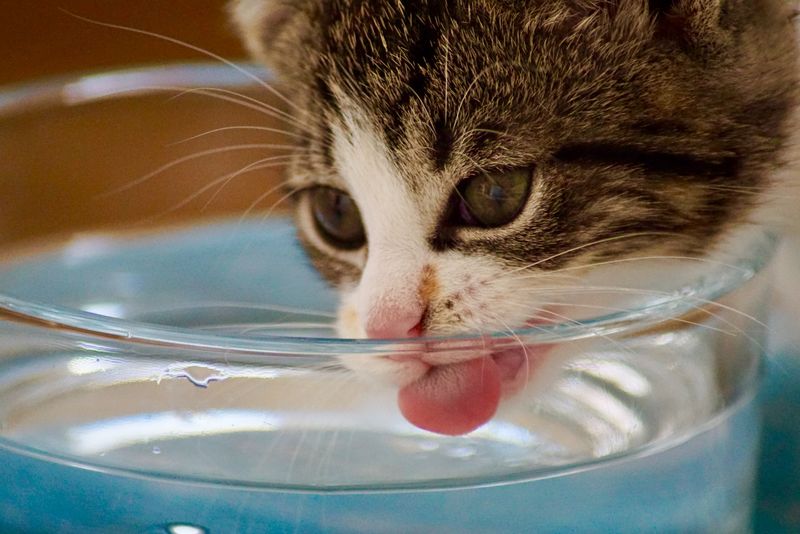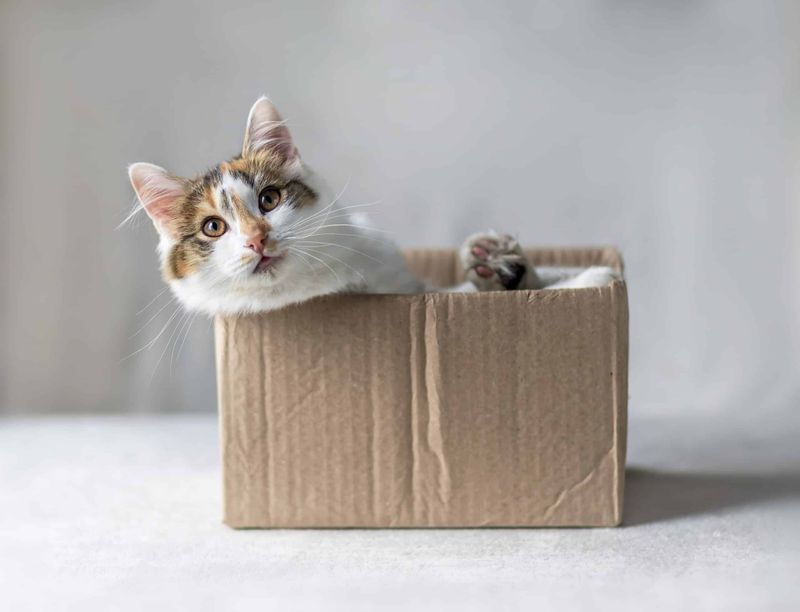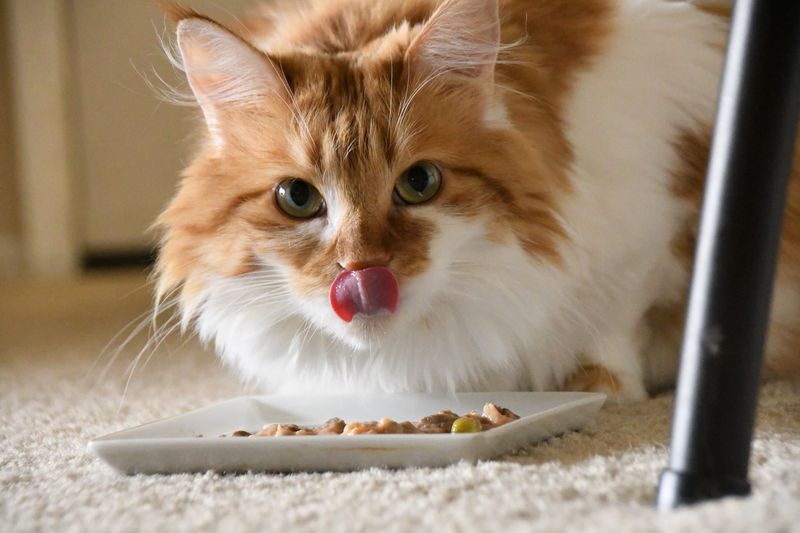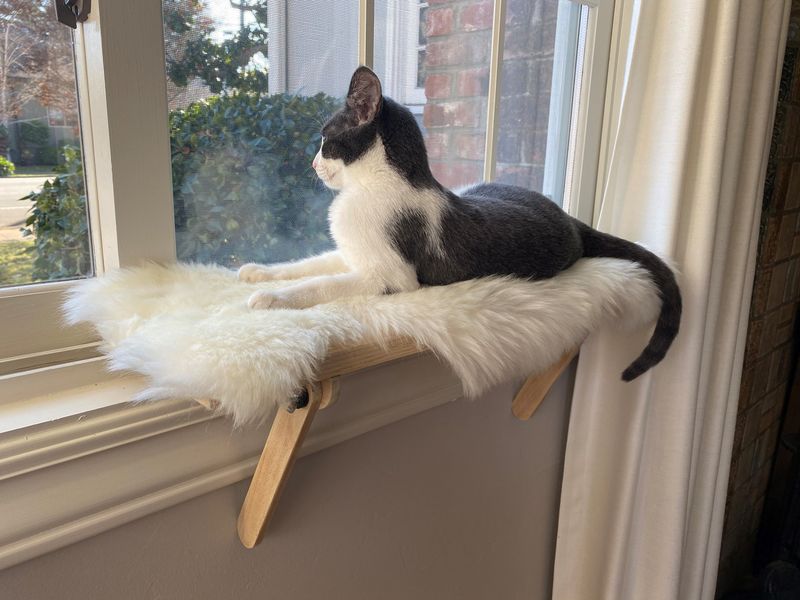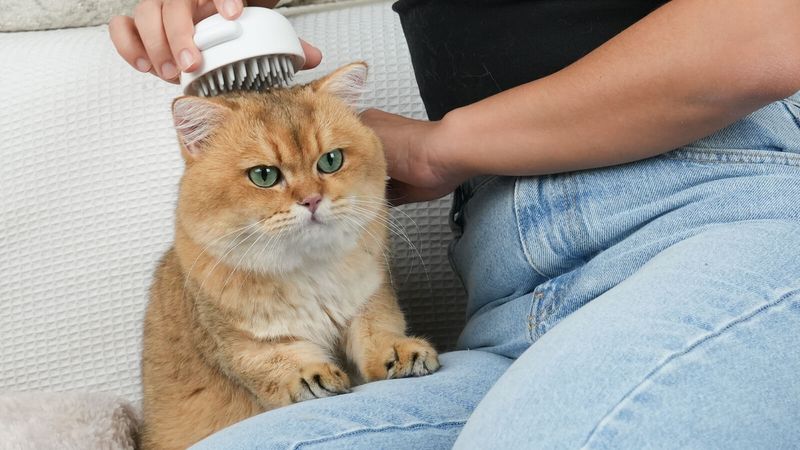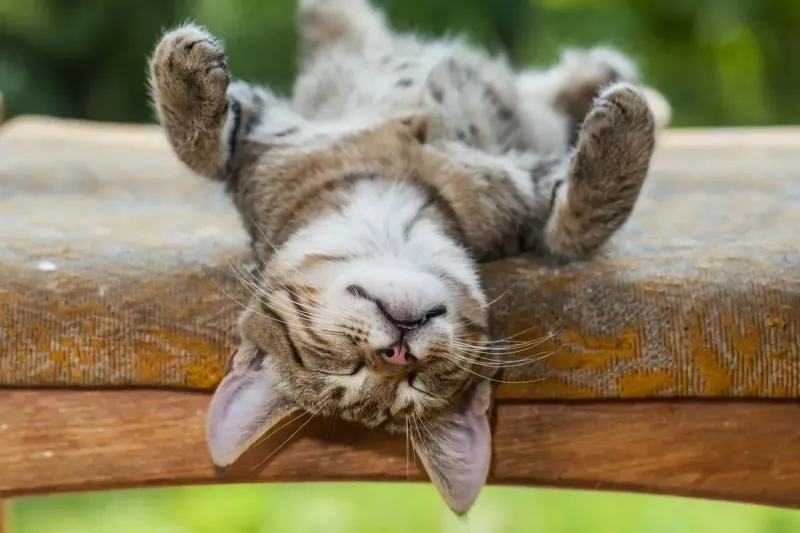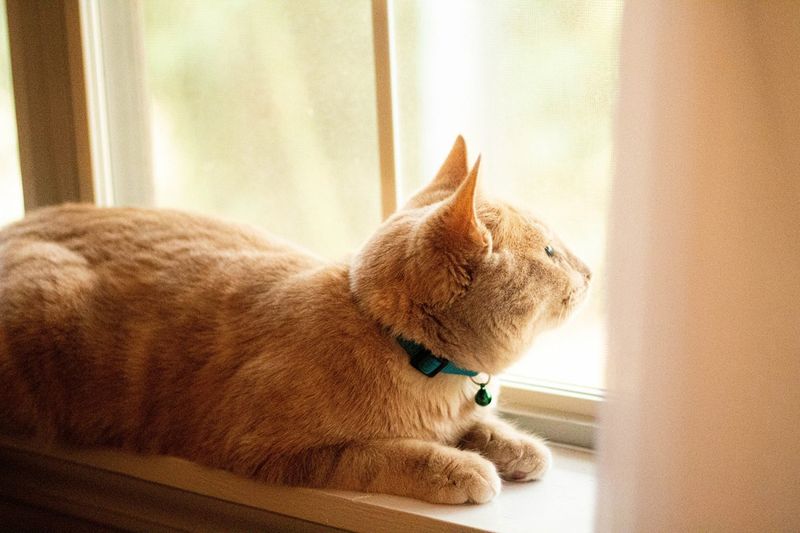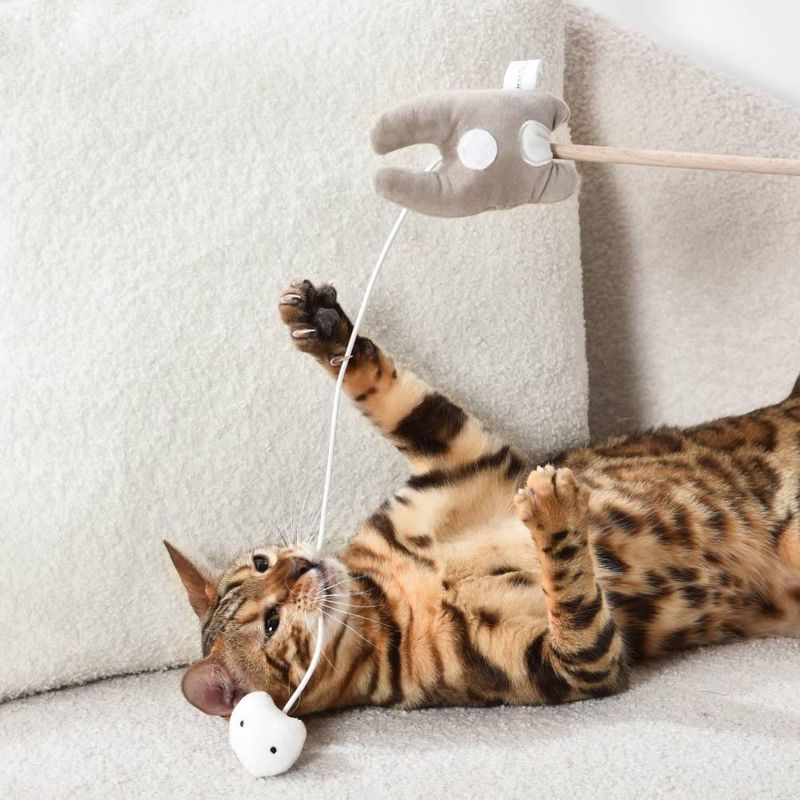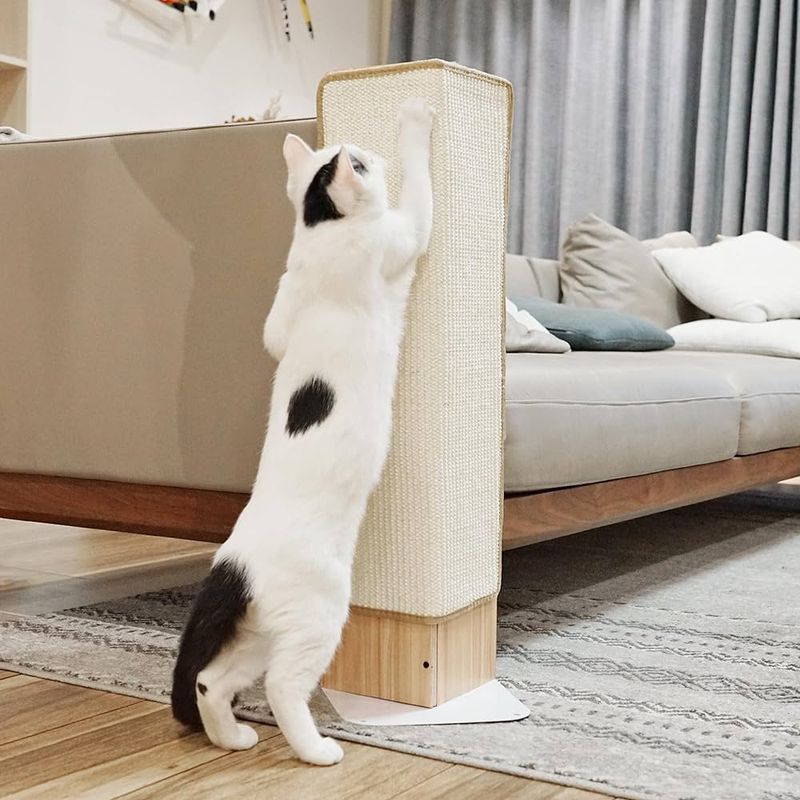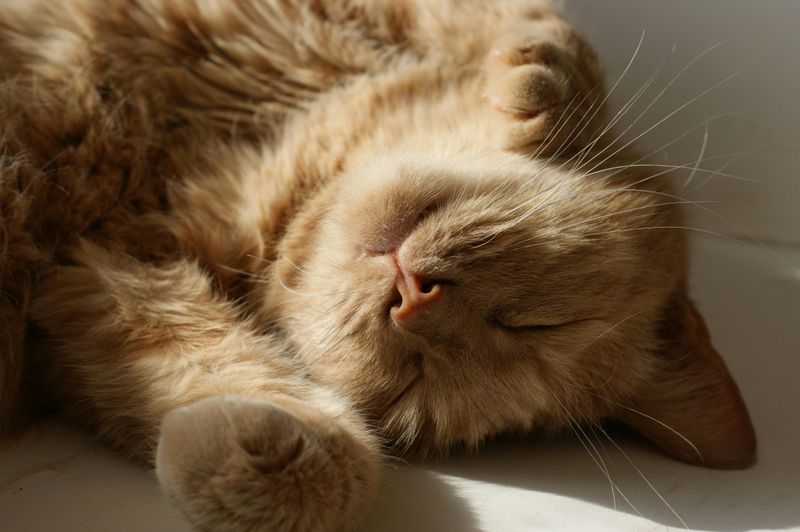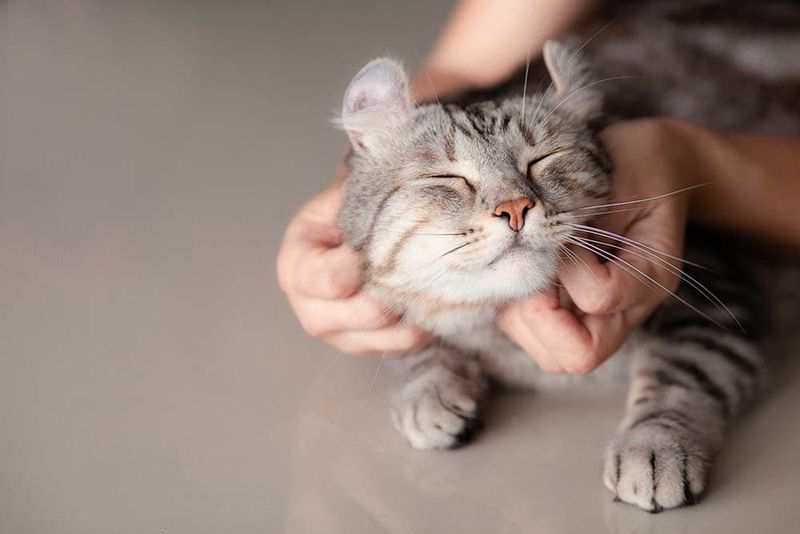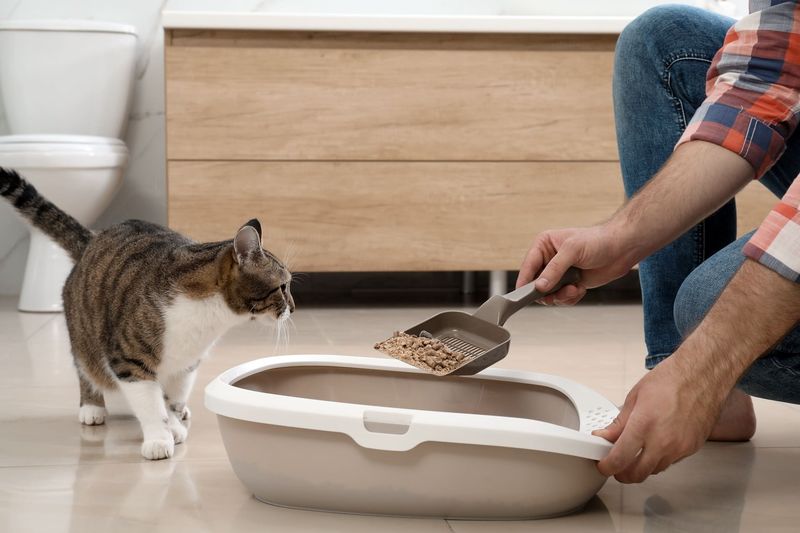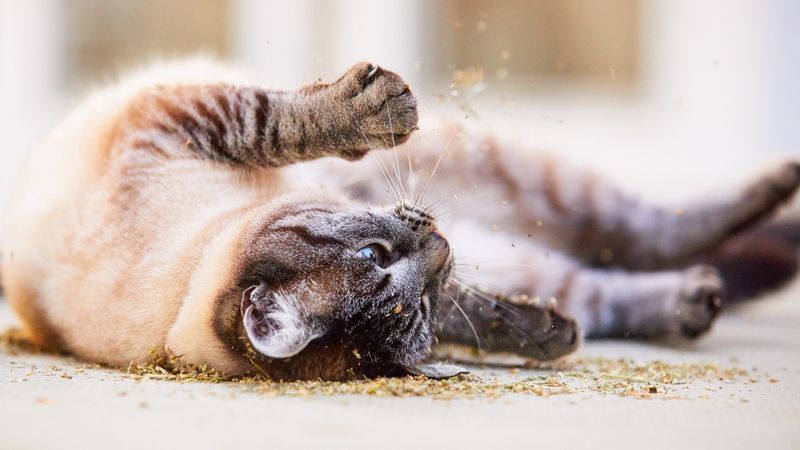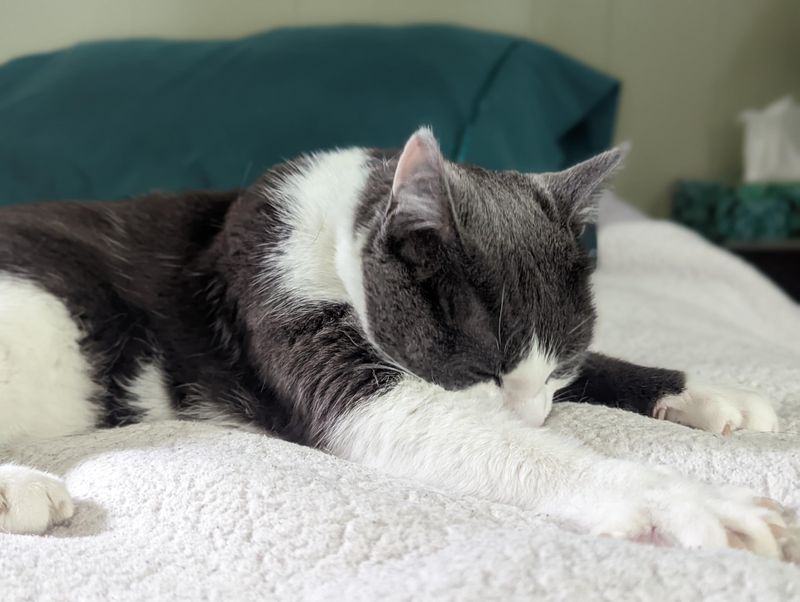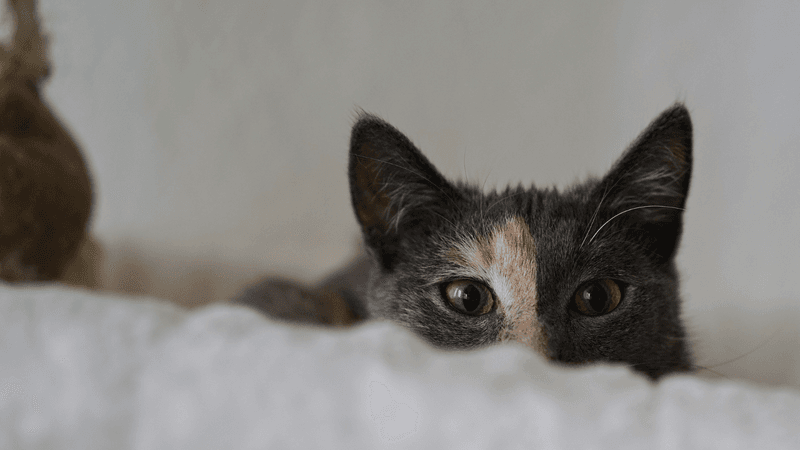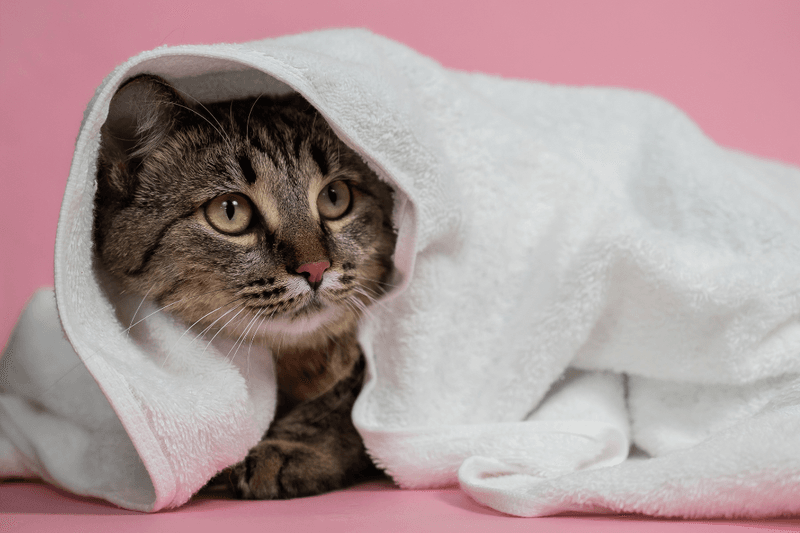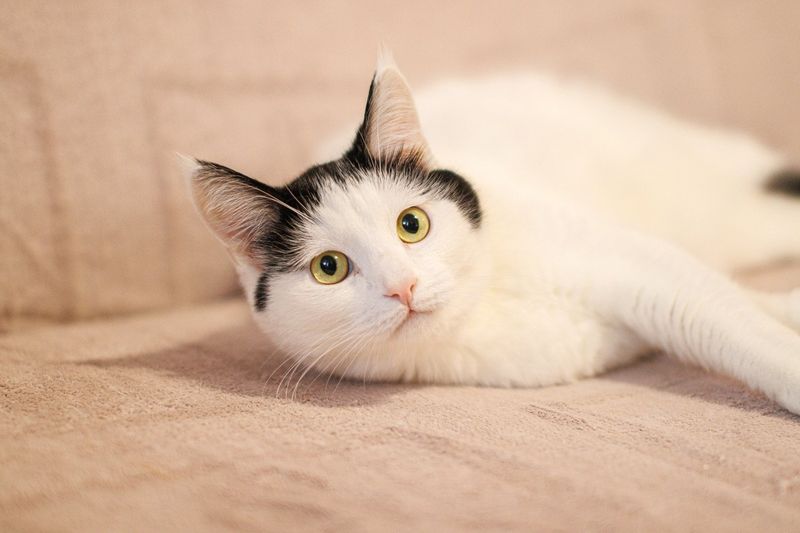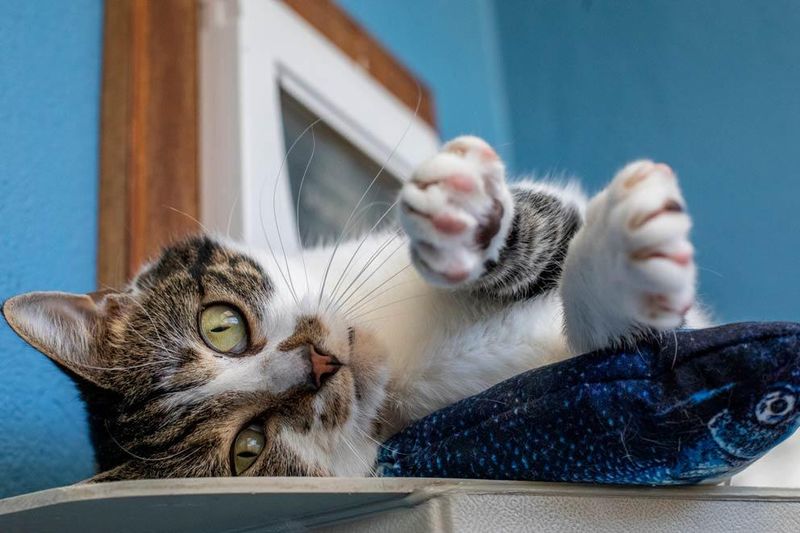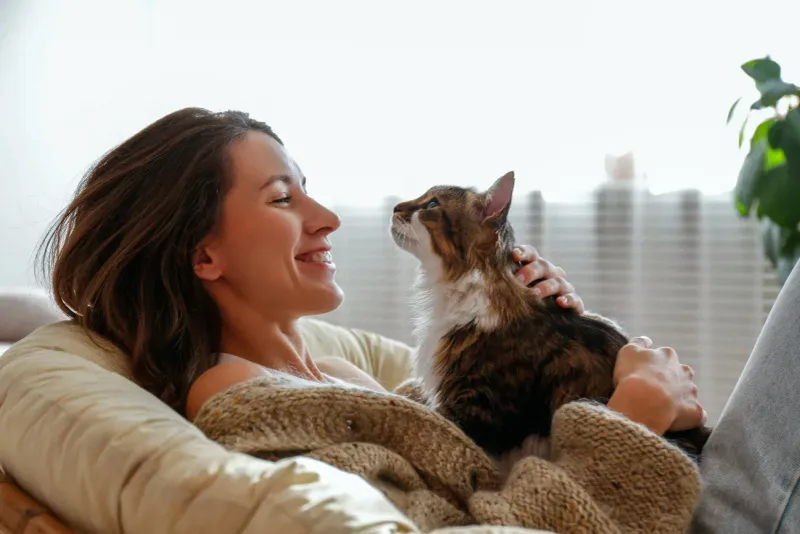📖 Table of Content:
- 1. Slow Blinks Across the Room
- 2. Fresh Water Throughout the Day
- 3. Cardboard Box Hideaways
- 4. Consistent Feeding Schedule
- 5. Elevated Resting Spots
- 6. Gentle Brushing Sessions
- 7. Respecting Their Quiet Time
- 8. Window Access for Bird Watching
- 9. Dedicated Daily Playtime
- 10. Scratching Posts in Strategic Locations
- 11. Warm Sunny Spots
- 12. Gentle Head and Cheek Scratches
- 13. Clean Litter Box Daily
- 14. Catnip or Silver Vine Treats
- 15. Cozy Blanket or Bed Washing
- 16. Hiding Treats Around the Home
- 17. Calm Handling During Stressful Times
- 18. Respecting Personal Boundaries
- 19. Gentle Introduction to New Things
- 20. Speaking in Gentle Tones
Cats often carry an air of independence, but they’re far more observant than they appear. Every quiet gesture, gentle word, or daily routine gets noticed. Even when they seem indifferent, they’re taking it all in.
Beneath the calm exterior is a creature that responds deeply to consistency and care. Simple acts—like speaking softly, keeping a regular feeding time, or offering a warm lap—can leave a lasting impression. These habits help build a foundation of trust and comfort.
Small, thoughtful actions can go a long way in strengthening the bond between cat and human. Over time, they contribute to a more secure, happy pet. A well-understood cat is not just content—it thrives.
1. Slow Blinks Across the Room
Cats communicate affection through half-closed eyes and slow blinks. This gesture, often called a “kitty kiss,” signals trust and contentment in the feline world. When your cat gives you this dreamy look, returning it creates a special moment of connection.
Try initiating this silent conversation when your cat is relaxed but alert. The beauty of slow blinking is that it requires no special equipment or preparation – just a moment of mindfulness between you and your pet. Many cat behaviorists consider this exchange one of the purest forms of cat-human communication. Your furry friend will appreciate this respectful acknowledgment of their language.
2. Fresh Water Throughout the Day
A bowl of old water may as well be empty to a cat. They crave freshness and often skip drinking if the water doesn’t meet their standards. Clean, frequently replaced bowls placed throughout the home can keep hydration levels where they should be.
Some cats prefer running water – a small fountain can be a worthwhile investment for these particular felines. Good hydration prevents urinary tract issues, a common health problem in domestic cats. Your attentiveness to this basic need shows care in ways your cat instinctively values.
3. Cardboard Box Hideaways
The simple cardboard box ranks among a cat’s favorite possessions. These humble containers provide security, warmth, and the perfect vantage point for ambushing unsuspecting toys or human ankles. Saving boxes from deliveries creates instant happiness for your feline friend. Cats feel protected in enclosed spaces where they can observe their surroundings while remaining hidden.
This security satisfies deep-rooted instincts from their wild ancestors who needed safe observation posts. Rotating new boxes regularly keeps the environment interesting. Your cat will appreciate this zero-cost enrichment that acknowledges their natural preferences and hunting instincts.
4. Consistent Feeding Schedule
Nothing says “comfort” to a cat like knowing exactly when dinner is served. Their sense of time is impressive—they often start pacing near the bowl well before mealtime. Keeping a consistent schedule helps them feel secure.
This reliability reduces anxiety and prevents the stress that comes with uncertainty about when the next meal will appear. For cats, who are both predators and prey in nature, food security is deeply connected to overall well-being. Even on hectic days, prioritizing this schedule shows respect for your cat’s needs. The appreciation shows in reduced begging behaviors and improved digestive health.
5. Elevated Resting Spots
Perched above the room, a cat finds both comfort and control. These elevated spots mimic the trees their ancestors once climbed for safety and a better view. A few well-placed cat trees or window perches can turn your home into the perfect feline landscape.
These heights provide both security and entertainment as they watch household activities from above. The effort to create these spaces shows an understanding of your cat’s natural preferences. Your recognition of their need for vertical territory demonstrates respect for their feline nature in ways they deeply appreciate.
6. Gentle Brushing Sessions
Regular brushing removes loose fur, prevents mats, and stimulates healthy oil production in your cat’s coat. Beyond these physical benefits, many cats experience brushing as a form of social bonding similar to mutual grooming between feline friends. The key is finding the right brush and technique for your specific cat.
Some prefer soft bristles while others enjoy the deeper stimulation of a grooming glove or comb. Watch your cat’s body language to determine the perfect pressure and duration. Short, positive sessions build trust over time. Even brush-resistant cats often come to appreciate this attention when it’s offered on their terms, with patience and respect for their preferences.
7. Respecting Their Quiet Time
Cats spend 12-16 hours daily sleeping, with additional time for quiet contemplation. Recognizing and honoring these rest periods shows profound respect for your cat’s natural rhythms. Resist the urge to disturb a peacefully napping cat just for human-desired interaction. Creating undisturbed resting spaces throughout your home gives your cat the option to retreat when needed.
These sanctuaries become particularly important in busy households with children or multiple pets. Your restraint during these times builds trust. The cat learns that interactions with you are voluntary rather than imposed, strengthening your relationship through respect rather than demand.
8. Window Access for Bird Watching
Natural entertainment through windows provides essential mental stimulation for indoor cats. The movement of birds, squirrels, and even passing cars creates an ever-changing environmental enrichment program that satisfies hunting instincts without actual predation. Arranging furniture or installing perches to facilitate easy window access transforms ordinary glass into cat television.
Some cats spend hours engaged in this activity, tracking movement with intense focus and occasional chattering. During colder months when windows remain closed, this visual connection to the outside world becomes even more valuable. Your thoughtfulness in providing this stimulation acknowledges your cat’s need for environmental engagement beyond human interaction.
9. Dedicated Daily Playtime
Active play sessions satisfy your cat’s hunting instincts while providing essential exercise. Even just 5-10 minutes twice daily can significantly improve physical health and reduce problem behaviors stemming from boredom or excess energy. Wand toys that mimic prey movement are particularly effective at engaging natural stalking and pouncing behaviors.
The way you move the toy matters – mimicking the erratic movements of small animals creates the most compelling play experience. Consistency matters more than duration. Your cat will come to anticipate these special interaction times, strengthening your bond while meeting their need for appropriate predatory outlets.
10. Scratching Posts in Strategic Locations
Scratching isn’t just about claw maintenance – it’s a complex behavior involving scent marking, stretching, and territorial communication. Multiple scratching surfaces throughout your home acknowledge this natural need while protecting your furniture. Placement matters tremendously. Observe where your cat naturally tries to scratch and position appropriate alternatives nearby.
The most appreciated posts match your cat’s scratching style – some prefer vertical posts while others favor horizontal surfaces. Materials make a difference, too. Sisal, cardboard, and wood offer different textures that appeal to individual preferences. Your attention to these details shows understanding of your cat’s instinctual needs.
11. Warm Sunny Spots
Cats are heat seekers by nature, with comfort temperatures several degrees higher than humans prefer. Creating or preserving access to sunny spots around your home provides natural warming zones your cat will deeply appreciate. During colder months, ensuring window blinds remain open during peak sunlight hours creates these special warming areas.
Some cat owners arrange furniture specifically to maximize these solar heating opportunities. The contentment a cat displays while basking in sunshine reflects genuine physical pleasure. Your awareness of this need and willingness to accommodate it demonstrates understanding of your cat’s physical comfort in ways that strengthen your bond.
12. Gentle Head and Cheek Scratches
Those cheek rubs and chin scratches aren’t just about feeling good—they’re deeply instinctual. Cats have scent glands in those spots, and when you scratch them, they’re happily marking you as theirs. If you hear purring, that’s a clear sign you’ve earned their approval.
Learning your individual cat’s preference for pressure and exact location shows attentiveness to their unique personality. Some prefer light touches while others appreciate firmer scratching – your willingness to adjust demonstrates respect for their preferences.
13. Clean Litter Box Daily
Few gestures demonstrate respect for your cat more clearly than maintaining a pristine bathroom space. Cats are naturally clean animals with sensitive noses – using a dirty litter box causes genuine distress and can lead to elimination problems elsewhere in the home. Daily scooping removes waste before odors become offensive to your cat’s superior sense of smell.
This simple act acknowledges their dignity and natural cleanliness instincts. The location matters too – choosing a quiet, accessible spot away from food areas shows understanding of their preferences. Your consistency with this basic care task builds trust in ways your cat deeply values.
14. Catnip or Silver Vine Treats
Offering occasional catnip or silver vine creates special moments of euphoria for cats sensitive to these natural herbs. Not all cats respond – the sensitivity is genetic and affects roughly 70% of cats – but those who do experience a harmless recreational high. Fresh herbs provide stronger effects than dried varieties.
Growing a small pot of catnip creates an ongoing supply for special occasions. Silver vine, less known in Western countries, often affects cats who don’t respond to catnip. The playful rolling, rubbing, and increased activity typically last 10-15 minutes before fading. This simple botanical gift acknowledges your cat’s capacity for joy beyond basic needs.
15. Cozy Blanket or Bed Washing
Regularly washing your cat’s favorite sleeping spots maintains cleanliness while preserving their comforting scent. The trick is finding the right cleaning frequency – too often removes the familiar smells that create security, while too seldom allows dirt and allergens to accumulate. Using fragrance-free detergents prevents introducing harsh chemical smells that may deter your sensitive-nosed companion.
After washing, allowing your cat to re-mark the clean item with their scent glands restores their ownership. This balanced approach to cleanliness shows consideration for both hygiene and your cat’s olfactory comfort. The appreciation shows in their quick return to freshly cleaned favorite spots.
16. Hiding Treats Around the Home
Domestic cats miss the mental stimulation of hunting in the wild. Hiding treats around your home creates an enriching treasure hunt that engages natural foraging behaviors. This simple activity transforms eating from a passive experience into an engaging challenge. Start with easy hiding spots your cat can quickly discover, gradually increasing difficulty as they master the game.
The excitement of discovery provides both mental stimulation and physical activity. This enrichment activity acknowledges your cat’s predatory intelligence and need for problem-solving opportunities. Their appreciation shows in increased environmental engagement and the satisfied trot that follows each successful treat discovery.
17. Calm Handling During Stressful Times
Veterinary visits, medication administration, and grooming sessions can create anxiety for many cats. Your calm, confident handling during these necessary procedures provides essential emotional support. Speaking in soft tones while maintaining gentle but secure holds communicates safety. Wrapping nervous cats in a towel creates both physical security and a barrier against visual stimulation that might increase stress.
This “purrito” technique often helps during nail trims or ear cleaning. Offering treats immediately after challenging experiences helps create positive associations for the future. Your patience during these moments builds trust that extends well beyond the stressful event itself.
18. Respecting Personal Boundaries
A swishing tail or turned-back ears? That’s a cat’s way of saying, “I need a break.” Noticing these signals and giving them space shows you understand and respect their boundaries.
When your cat walks away mid-petting session or gives warning signs like tail twitching, allowing this space without pursuit builds trust. This restraint may seem counterintuitive when you’re enjoying the interaction, but it’s essential for healthy relationship dynamics. Your willingness to let interactions end on their terms teaches them that future engagement remains safe and voluntary. This respect creates cats who seek interaction rather than avoid it.
19. Gentle Introduction to New Things
Caution around change is built into a cat’s nature. Let them explore new things slowly and on their terms. Forcing the issue creates stress; patience builds trust.
New furniture, visitors, or even food dishes are best presented with an escape route clearly available. This methodical approach may require more time initially but creates lasting positive outcomes. Your cat will appreciate this thoughtful pace that acknowledges their need for gradual adaptation rather than sudden change.
20. Speaking in Gentle Tones
With ears tuned to the faintest sounds, cats are quick to react to tone and volume. A quiet voice, paired with a slow, deliberate blink, creates a moment of shared calm. It’s a small gesture that speaks volumes in a language cats instinctively understand.
Consistency in your vocal approach helps your cat predict interactions. The appreciation for this consideration shows in relaxed body language and willingness to remain present during conversations, even if they’re technically one-sided.
